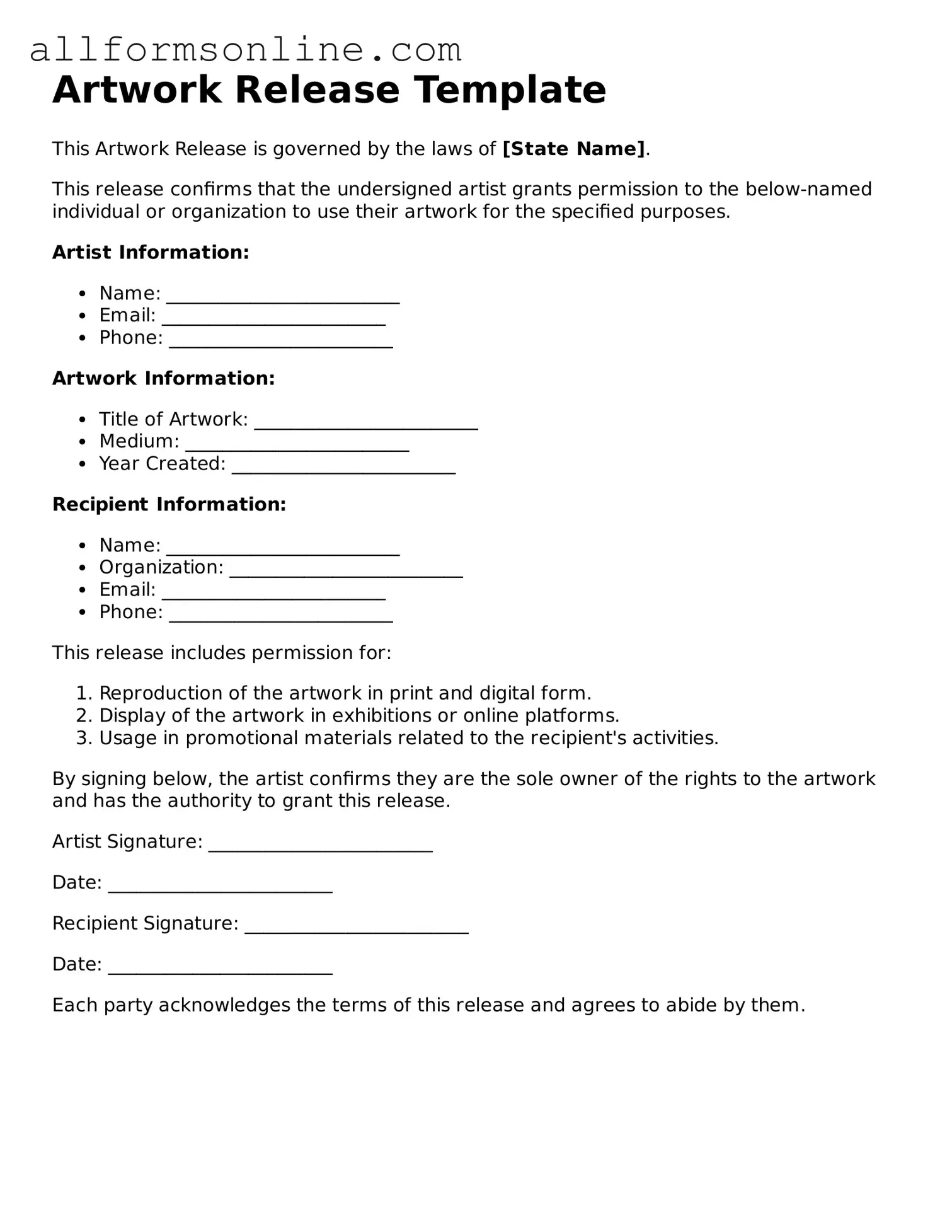What is an Artwork Release form?
An Artwork Release form is a document that grants permission for the use of artwork created by an artist. This form is essential for ensuring that both the artist and the entity using the artwork understand the terms of use. It typically outlines the rights being granted, the scope of use, and any compensation involved. By signing this form, the artist retains certain rights while allowing others to utilize their work in specified ways.
Who needs to sign the Artwork Release form?
Both the artist and the party wishing to use the artwork must sign the Artwork Release form. The artist is usually the creator of the artwork, while the other party can be an individual, a business, or an organization. This mutual agreement helps protect the interests of both parties and ensures clarity regarding the usage of the artwork.
What information is typically included in the Artwork Release form?
The Artwork Release form generally includes several key pieces of information. This includes the names and contact details of both the artist and the user, a description of the artwork being released, the specific rights being granted (such as reproduction, distribution, or modification), and any terms regarding compensation or royalties. It may also specify the duration of the agreement and any limitations on how the artwork can be used.
What happens if the Artwork Release form is not signed?
If the Artwork Release form is not signed, the party wishing to use the artwork does not have legal permission to do so. This could lead to potential legal issues, including copyright infringement claims. The artist retains full rights to their work, and without a signed agreement, they can decide to pursue legal action if their artwork is used without consent. It’s crucial for both parties to complete this form to avoid misunderstandings and protect their rights.
